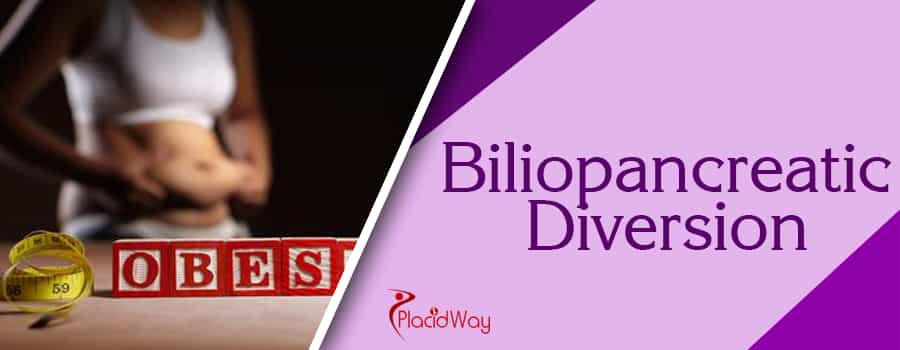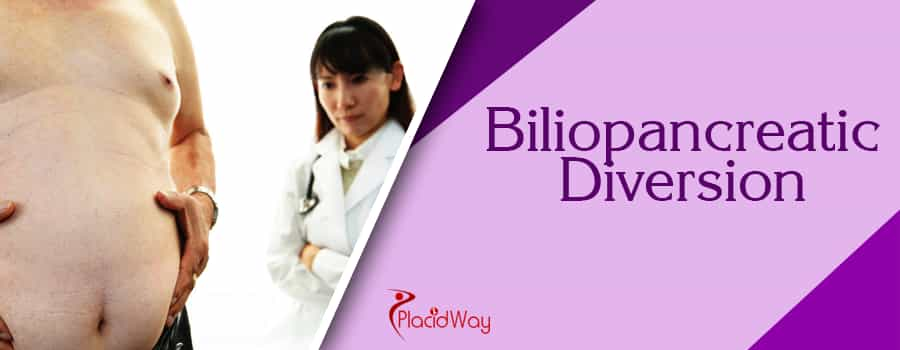

Biliopancreatic Diversion Abroad
The Biliopancreatic diversion procedure is the creation of Prof Nicola Scopinaro from Italy and it was introduced in 1979. The procedure combines the benefits of restriction and mal-absorption. Since 1979, more than 10,000 cases have been carried out world-wide with excellent results, with Prof Nicola Scopinaro performing over 2300 surgeries.
The operation combines initial restriction of food intake with a major fat and starch malabsorption. The malabsorption takes place without the side effects of the small bowel bypass procedure. The flushing of this loop with bile and pancreatic juices prevents the stagnation and bacterial overgrowth that led to septic problems with small bowel bypass. The weight loss achieved through this procedure is the best compared to any available weight loss procedure and weight regain is less likely to occur because of the inability to absorb more than 25% of ingested fat and starch. Prof Scopinaro claims a long-term weight loss of 73% of excess body weight.
The Biliopancreatic diversion procedure changes the normal process of digestion by making the stomach smaller. It allows food to bypass part of the small intestine so that fewer calories are absorbed. Because of the risks, this surgery is for people who suffer from morbid obesity with a BMI higher than 50.
Types of biliopancreatic diversion
There are two main types of biliopancreatic diversion surgeries: a biliopancreatic diversion and a biliopancreatic diversion with duodenal switch. Most surgeons will not perform duodenal switch surgery unless the patient has a BMI higher than 50 and the weight is causing serious health problems.
Causes of obesity
Symptoms of obesity
The health risks associated with obesity include:

How is the procedure performed?
The lower part of stomach is removed leaving a pouch of between 250 and 400ccs. The duodenum is closed over. The small bowel is measured backwards from the point where it joins the large bowel or colon a distance of 250cm and the small bowel is cut across at this point. The lower divided end is connected to the stomach pouch. The bottom end of the upper section is joined to the lower loop so as to make a new opening from the point where it joins the colon.
Benefits of the biliopancreatic diversion procedure
The patient will be able to eat a very small amount of food, which will reach the colon much faster than normally because it will pass through only 40% (275cm) of the small bowel. This means less time to fully digest food.
The bile from the liver and the pancreatic juice from the pancreas, two of the most important digestive juices, have only 1/10 of the normal time to digest the food in the small bowel. This means that fats, starches and proteins will not be broken so they will not be totally absorbed by the organism. Only approximately 25% of these are absorbed. This means there is a major alteration in the patient’s digestive processes with controlled mal-absorption of nutrients. The poorly digested food passes rapidly through the colon and is lost to the system with resultant initial weight loss and long term weight control
A smaller stomach means less food eaten and a bypasses intestine means the absorption of fewer calories and more weight loss. But you still need to adopt healthy habits, such as eating healthy and doing exercise. The recovery period for this procedure is 3-6 months and it is common for patients to feel weak and have periods of nausea and even vomiting during this time.
Cost of Biliopancreatic Diversion
The Biliopancreatic Diversion costs depend on the geographical location of the facility. The intervention surgery is not performed widely, and is available at only a handful of medical facilities around the world, and by a handful of surgeons, so costs can be high, and may or may not be covered by medical insurance. Choose a bariatric surgeon with experience and expertise in all bariatric surgical procedures. In addition, it is important that your bariatric surgeon be a member of a domestic or international Society of Bariatric Physicians, and that he or she performs the procedure in a JCI (Joint Commission International) accredited quality hospital or facility.
Choosing a Weight Loss Surgeon
Before undergoing weight loss surgery, it is important to research doctors and make sure that he or she has had ample experience in that particular form of surgery. Since the Biliopancreatic Diversion procedure is not done frequently, it is important to find state-of the art facilities and knowledgeable surgeons and hospital staff to perform the procedure. Always verify credentials, accreditation and expertise before choosing a particular bariatric surgeon for this procedure.
If you want to know more about the Biliopancreatic diversion, please contact us!
Affordable Obesity Surgery Abroad | Best Bariatric Surgery